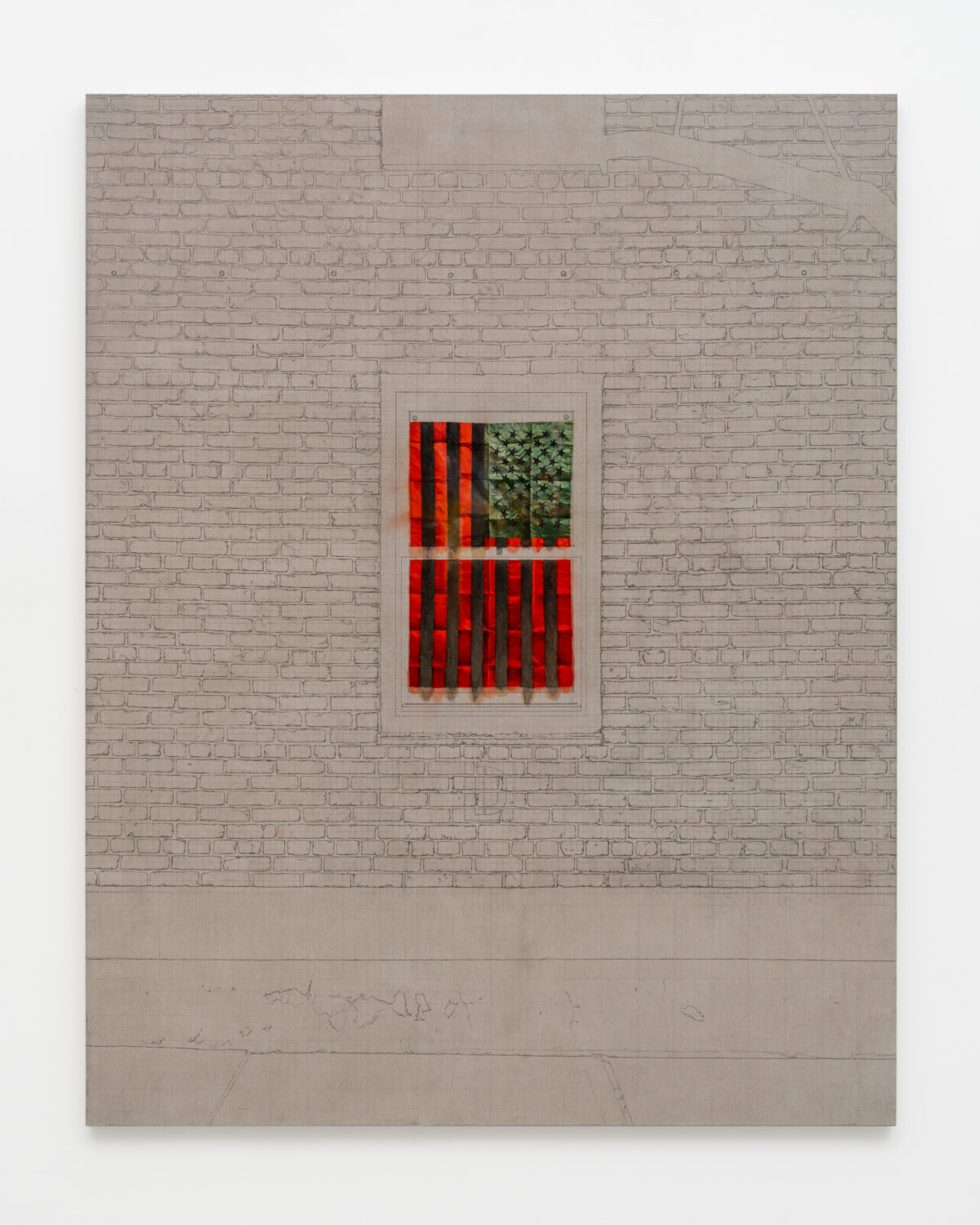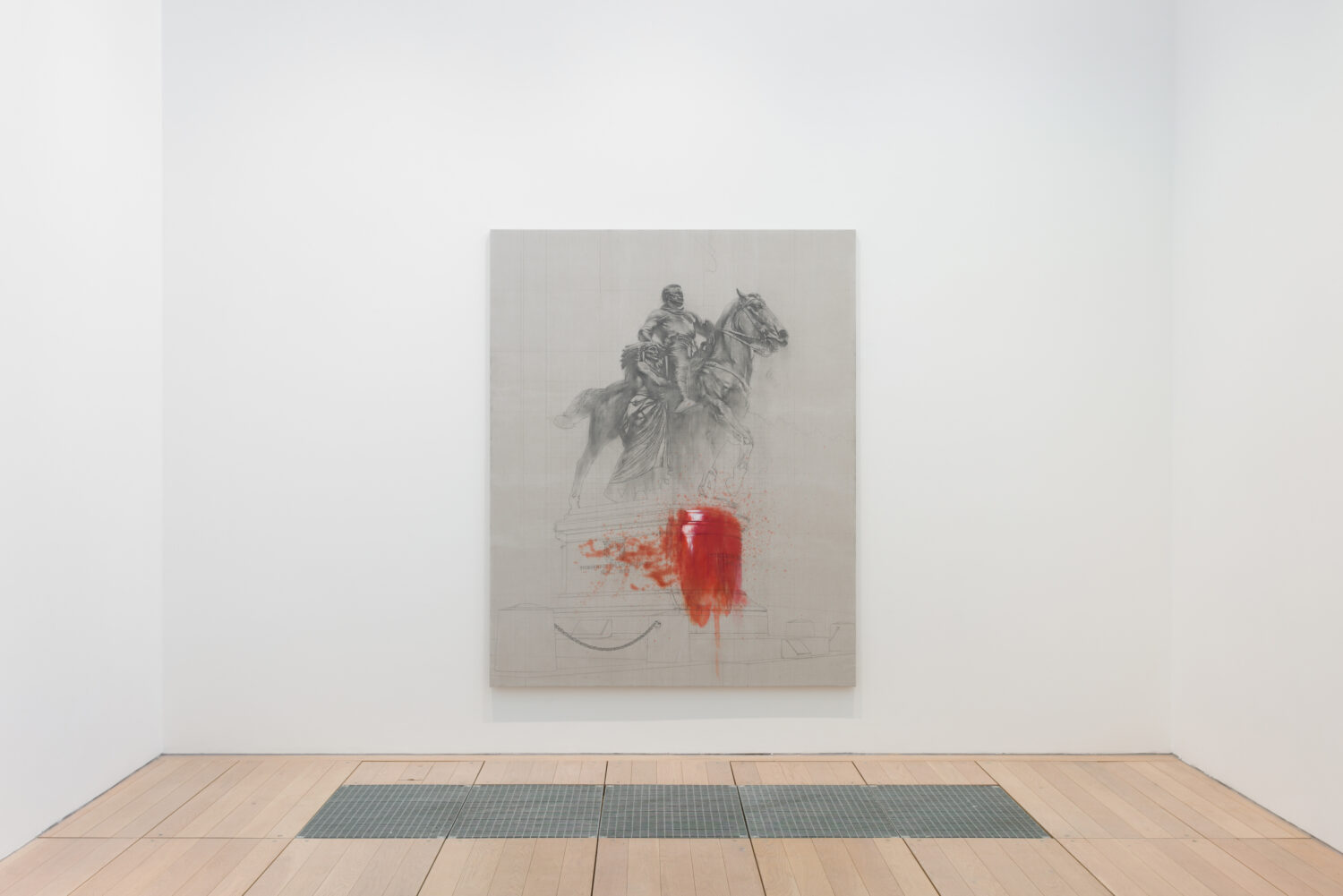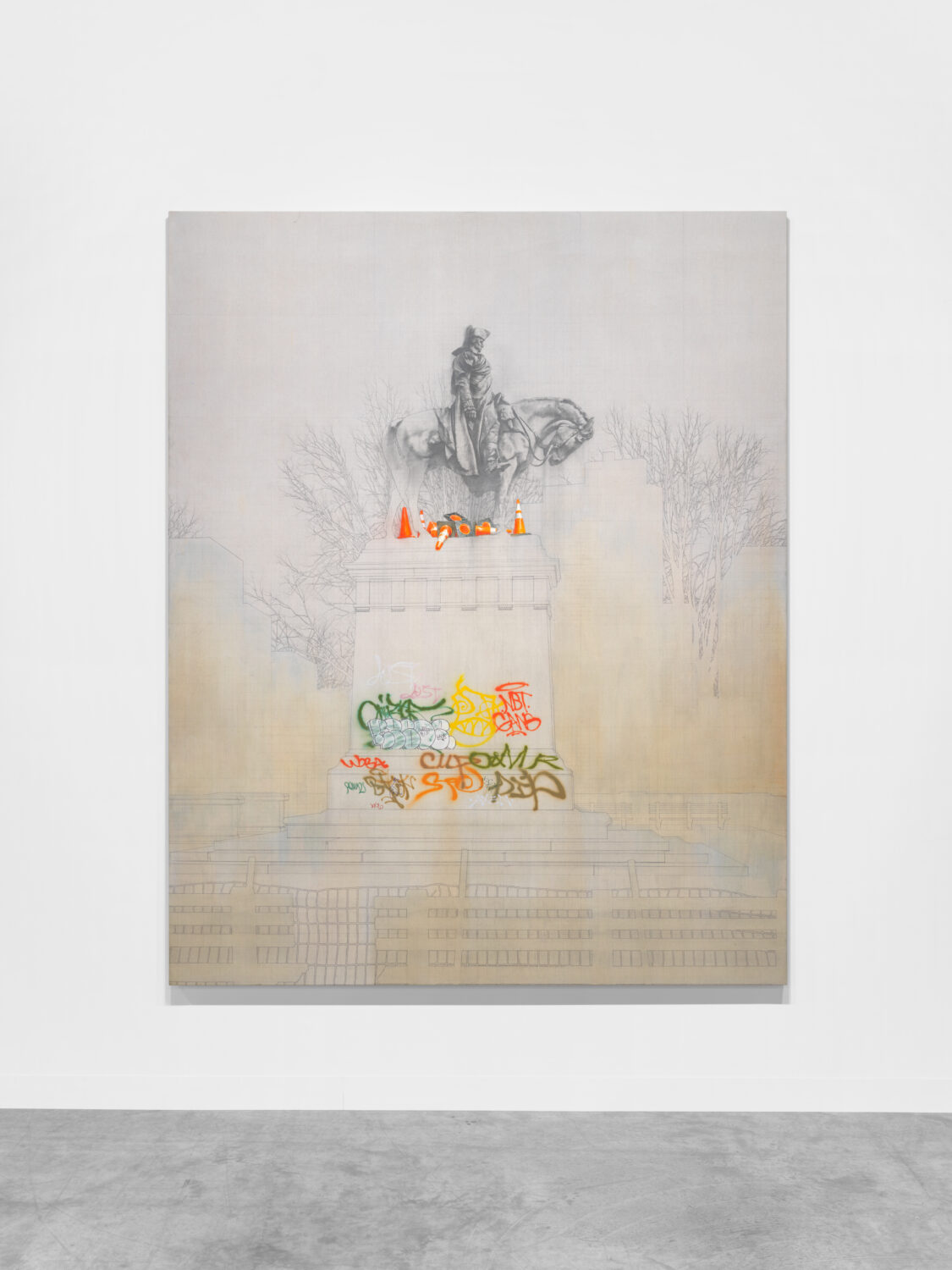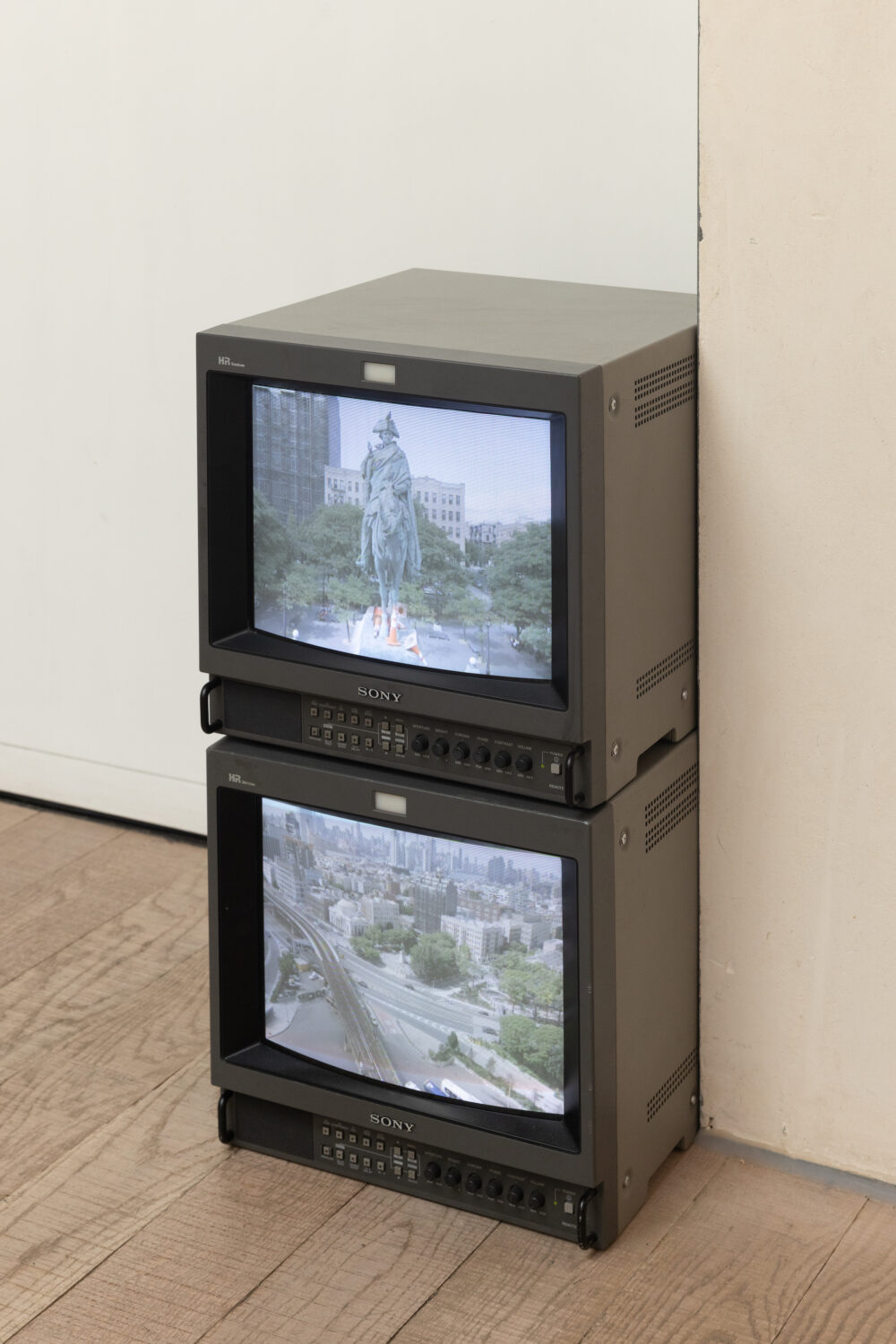Interview: Esteban Jefferson Examines The Detritus Of Protest
By Something CuratedHailing from New York, artist Esteban Jefferson’s practice explores matters of race, identity and the legacies of colonialism. Utilising photography, drawing, painting and sound as forms of documentation, Jefferson typically depicts the focal points of his compositions in great detail, creating a stark contrast between the subject or object in focus and the surrounding environment. His paintings are left intentionally unfinished, suggesting a sense of the ongoing. Having already exhibited extensively in the US, now London’s Goldsmiths CCA is hosting the first UK institutional exhibition by the artist, running until 14 January 2024. For the show, Jefferson has created a new series of works revolving around the detritus from public displays of protest related to the death of George Floyd, from small interventions like graffiti on a bus stop sign to large-scale vandalism of well-known colonialist monuments. To learn more about the artist’s practice and his latest body of work, Something Curated spoke with Jefferson.

Something Curated: Can you give us some insight into your background and journey to artmaking?
Esteban Jefferson: I’ve lived my whole life in Manhattan, except one year that I lived in Brooklyn. Art has always been a part of my life, especially since my parents are architects who were always interested in art themselves. I grew up going to museums and galleries around New York with them, so maybe it’s no surprise that I ended up how I did. My grandmother was even a printmaker; she used to make etchings alongside Sam Gilliam in Washington DC. Until I was 12 or so, I thought I was going to draw comic books professionally. At some point around then I realised I didn’t want to draw what someone else told me to; since then, being an artist in the capacity I am now has been the only way I could envision living a happy life.

SC: What is the thinking behind the selection of works included in your upcoming presentation, May 25th, 2020, at Goldsmiths CCA?
EJ: The work was all made with the space in mind. This is a body of work I’ve been working on full-time for about a year, but thinking about since the events of 2020 were still occurring. It’s more or less a diary of protest through my vantage point in New York City. The murder of George Floyd led to a series of large-scale protests erupting, but some of the effects of the protests (i.e. the removal of the sculpture of Teddy Roosevelt from the American Museum of Natural History) do not directly relate to George Floyd, even though the same racial and colonial issues are at the root of both events. I tried to use the space to break this chronology of NYC protest into slightly different themes: the “tank” (the dark metal room in the show) is representative of the height of the 2020 protests – bombed-out police vans, looted luxury stores, pan-African flags everywhere. The other two rooms are more representative of the detritus: one room shows the cycle of removal of a colonialist sculpture of Teddy Roosevelt, a direct result of the George Floyd protests, while the other room shows sites that continue to be vandalised today.

SC: What interests you in the detritus of protest, and interventions like graffiti and other forms of vandalism?
EJ: The individual nature of it is fascinating to me. The way one person can splash paint on a sculpture and make a statement everyone understands is fascinating to me. I’m also very interested in the battle between state-sponsored propaganda imagery (like a giant, heroic statue of Teddy Roosevelt, one of the masterminds behind the American approach to global colonisation we are living through today) and images created illegally by individual people, especially when they are political in nature.
SC: Why have you focussed on the Teddy Roosevelt statue in particular?
EJ: Teddy Roosevelt was horrible, and this statue in particular articulated a clear racial hierarchy and ignored real history. This sculpture is also of interest because it was controversial for many years before the George Floyd protests, and the museum continually refused to remove it. Once the protests began (protests which were on a scale unheard of in America), the museum almost immediately announced they would remove the statue. I suspect that the announcement to remove it was more motivated by fear of vandalism than an urge to do the right thing. This is further backed up by the fact that at the time they announced the removal of the statue, there was no plan in place about what to actually do with it, even though there had been calls to remove it for years. The video playing in the room is a Zoom call from the New York Landmarks commission, where they ponder the legality of removing the sculpture, and how to renovate the museum facade if they do, given that the entire site is an architectural landmark.

SC: Could you talk about your contrasting use of line drawing punctuated by moments of dense detail and colour — how did this technique develop?
EJ: We see the “full image” every day – I’m interested in focusing on small details that contain large stories but might be glossed over without being highlighted. There is also an element to it where you are seeing a painting being developed over time but all at once – I start with a gridding drawing, then colour washes, and finally hyped detail for the parts I find most compelling. Leaving some of these elements unfinished gives more importance to the areas that are finished or more laboured over.
SC: What are some of your favourite cultural spaces in New York?
EJ: White Columns, e-flux, Printed Matter, Dashwood Books, Mast Books, O’Flaherty’s.
SC: And what are you currently reading?
EJ: The Mastermind by Evan Ratliff.
Feature image: Esteban Jefferson, December 2, 2022, 2022. Photo: Justin Craun